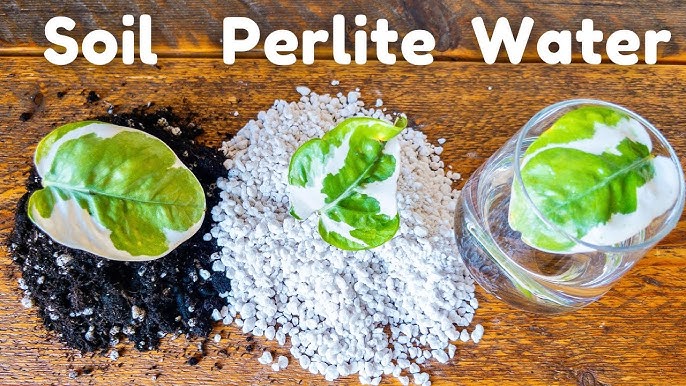1. Why propagation matters more than ever in November
When daylight shortens and gardens fall into rest, most people stop planting. But for plant lovers, November is the perfect time to begin something new indoors – propagation.
Propagation simply means growing new plants from existing ones by cuttings, leaves, division, or seeds. Instead of buying new plants in spring, you can multiply your collection right now, inside your cozy home.
This quiet season gives you time to experiment, observe, and prepare strong young plants ready to thrive when spring returns. Plus, it’s deeply rewarding: every cutting that roots feels like a tiny miracle, your own green creation.
So whether you’re a new indoor gardener in Vancouver or a landscaper preparing stock for spring, this guide will walk you through exactly how, when, and why to propagate successfully through Canada’s cold months.

2. Why propagation is important (and who should do it)
Propagation isn’t just for professionals. It’s for anyone who wants to:
-
Save money by multiplying plants you already own.
-
Rejuvenate old or leggy plants that lost shape or strength.
-
Replace plants hit by root rot or pests like fungus gnats.
-
Gift plants to friends or customers.
-
Create consistent plant décor for homes, offices, or cafés.
It’s ideal for indoor gardeners, small business owners, and gardeners who want to stay active during winter.
Even better, propagation builds patience, observation skills, and connection with your plants. Every rooted cutting is proof of life, resilience, and care.

3. When is the best time to Propagate in Canada?
While most outdoor propagation happens in spring and early summer, indoor propagation works beautifully in late fall and winter if you create the right conditions.
In November (Canada zones 7–9 like Vancouver):
-
Indoor temperatures stay stable around 18–24°C — perfect for rooting.
-
Artificial grow lights easily compensate for short daylight hours.
-
Fungus gnat risk is lower when using clean perlite or water instead of soil.
So rather than pausing your garden life until spring, now is the time to start your winter propagation projects indoors.
4. The Propagation Process – Step-by-Step
Step 1. Choose a Healthy Mother Plant
Pick a parent plant that’s pest-free and vigorous. Avoid weak, yellowing, or pest-infested specimens. Plants like Pothos, Philodendron, Spider Plant, Snake Plant, Monstera, and Tradescantia are excellent starters.
Step 2. Prepare Clean Tools
Use sharp, sterilized scissors or pruning shears. Clean tools prevent fungus and bacterial infections that can cause rot. A quick wipe with rubbing alcohol (70%) is enough.
Step 3. Take the Cutting
Cut below a node (the small bump where roots form). Each cutting should have 1–2 leaves above and one bare node below. Length: 8–12 cm is ideal.
For succulents, let the cut edge dry for 2–3 days before rooting to avoid rot.
Step 4. Apply Rooting Hormone (Optional)
Dip the base in rooting hormone powder (IBA or NAA). This speeds up root formation and increases success rate, especially in low-light winter conditions.
Step 5. Choose Your Propagation Medium
Here’s what works best in Canada’s cool season:
-
Perlite: sterile, airy, fungus-gnat-free.
-
Perlite + Vermiculite (1:1): retains gentle moisture.
-
Water propagation: perfect for vining plants, easy to observe roots.
Avoid heavy compost or soil during winter, it stays too wet and cold, encouraging rot.

Step 6. Create a Mini Greenhouse
Insert your cutting into the medium, covering one node. Then cover the pot loosely with a clear plastic dome or bag (poke small air holes). This traps humidity while allowing airflow.
Humidity: 60–70%.
Temperature: 20–24°C.
If your home is cold, place the pot on a seedling heat mat to gently warm the root zone.
Step 7. Provide Light and Warmth
Even in November, plants need 10–12 hours of bright, indirect light daily. Place them near a south-facing window or use LED grow lights (full-spectrum).
Avoid direct sunlight, which can overheat and dry out tender cuttings.
Step 8. Maintain Moisture
Mist gently or water sparingly medium should be damp, never soggy. Replace propagation water weekly to keep oxygen fresh.
Step 9. Wait for Roots
Patience is key. Most cuttings show roots within 2–4 weeks (Pothos, Monstera), but woody stems or succulents may take longer.
Healthy roots look white, thick, and firm not brown or mushy.
Step 10. Transplant to Potting Mix
Once roots are 3–5 cm long, move the new plant to a small pot with fresh, airy mix. Keep it in bright, indirect light and lightly moist soil for 1–2 weeks before treating it as a mature plant.

5. Special Winter Propagation Tips for Canadian Homes
-
Use grow lights to extend daylight hours.
-
Avoid cold drafts near windows.
-
For succulents, keep humidity low and use sandier medium.
-
For tropical plants, humidity trays or domes work wonders.
-
Label your cuttings with plant name and date—propagation can become addictive fast!
6. Common Mistakes and How to Avoid Them
| Problem | Cause | Solution |
|---|---|---|
| Cuttings rot before rooting | Medium too wet, cold, or dirty | Use sterile perlite/water, warm root zone |
| No roots after 4–6 weeks | Too dark, cold, or dry | Add grow light or heat mat, mist lightly |
| Leaves wilt or curl | Low humidity | Use humidity dome or bag |
| Brown root tips | Poor water quality | Replace water weekly; use filtered water |
7. The Joy (and Science) Behind Propagation
Propagation is not just technique, it’s therapy. Watching new roots form connects us to nature’s patience and renewal.
Scientifically, propagation helps preserve plant genetics, improve species survival, and even adapt plants to new environments. On a personal level, it teaches responsibility, observation, and care skills that every gardener develops over time.
8. Conclusion: Multiply Life, Even in the Cold
Winter doesn’t have to mean dormancy. While your outdoor beds rest under rain or snow, your indoor garden can come alive with tiny cuttings, roots, and new growth.
Propagation is more than multiplying plants it’s multiplying joy, resilience, and self-reliance.
So this November, grab a jar of perlite, a pair of clean scissors, and your favorite houseplant. In a few weeks, you’ll have new green companions ready for spring.
Ready to start your winter propagation setup?
Visit [DH Garden Centre, Vancouver] or shop online for perlite, rooting hormones, grow lights, heat mats, and starter pots everything you need to succeed this season.
Your next thriving plant starts with one small cutting.


